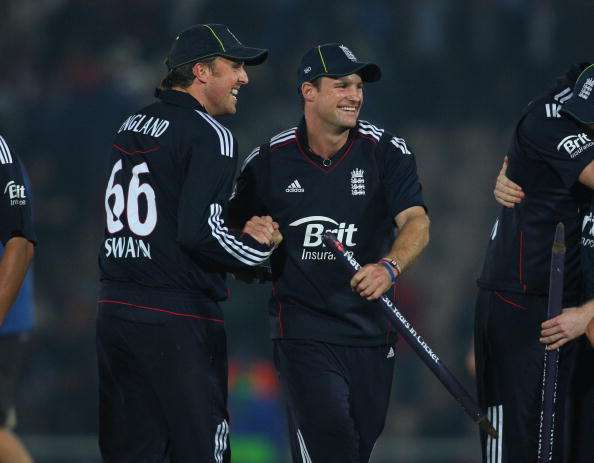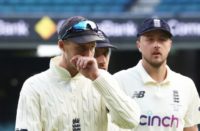It is difficult to know whether the North v South one-day series stated for next March is an innovation, a throwback, or an admonition of the selectors to up their game.
The spin from Andrew Strauss and those at ECB, or at least one aspect of it, is that it will re-invigorate 50-over cricket which has begun to look like the dowdy aunt among cricket’s three formats. This series, to be played in Abu Dhabi, is aimed to counteract any mission creep felt by counties that 50-over cricket may be the lowest of their priorities.
Then there is the global relevance to consider. After 11 World Cups, England have still not had to make room for it in their trophy cabinet – a lamentable underachievement for a country that has played one-day cricket, domestically at least, longer than any other.
England are set to host both the Champions Trophy (2017) and the World Cup (2019) and a good showing in both is vital if cricket is to retain its foothold in the public consciousness. But are three matches in the desert, on bare, sluggish pitches, really going to reveal much of relevance? Sorry, but I am not convinced.
The revelation, if you can call it that, which has grabbed most headline writers, is that the teams (comprising English-qualified players only and excluding those in the national squad) will be chosen by computer, though presumably it will need to be programmed by a human to indicate just where the South ends and the North begins.
The two teams will be decided, in part, by the Most Valuable Player (MVP) index started by the Professional Cricketers’ Association back in 2007, a device taken from American sport but largely ignored in English cricket. Its resurrection to relevance here, as a computerised means of selection, especially in the wake of England’s abject and early departure from the 2015 World Cup, looks like a big bowling boot up the behind for the selectors. It was their decision to go with tired old lags for that tournament (better the devil you know and all that), rather than the young tyros heading the MVP lists, that has been blamed for England’s ignominious exit, though most of the criticism did come in hindsight.
With research showing that 30 per cent of jobs could be performed by robots by 2020, why not the selection of a cricket team? In some ways that is how the job used to be done. Look at the averages, check on fitness, then pick the ones near the top.
And yet, there is something deeply ironic about an MVP method of picking a team being brought in by Strauss. Never the most natural of one-day batsmen, Strauss played 127 one-day internationals though you wonder just how many fewer it might have been had MVP been applied back then.
Selection won’t be completely data driven or indeed meritocratic. There will be the odd bit of social engineering and subjectivity used to decide the teams. For instance, there will be at least one spinner in each side irrespective of MVP values. The selectors will also be allowed some input too, their assessment centring around such things as bottle, character and the other intangibles computers cannot yet detect.
Of course Strauss could dispense with both computers and the selectors and have the teams selected by what many have long considered to be the soundest method of them all – the umpires. After all, they see more county cricket, across the divisions, than anyone else.
Get them all to write down the 13 England-qualified players they consider to be the best in each format. Naturally, there will be the odd pick or the occasional exclusion, on bias, but I reckon there would be at least eight or nine names common to most lists. The England coach and captain, or whoever, can then argue over the remaining few places, which are likely to be in flux anyway depending on conditions.
North v South plays on ancient stereotypes in England so could appeal to marketeers, but it isn’t new. England schools sides have long been picked following a North v South match as were many others, though some constructs are possibly more amusing than the cricket is competitive. In Cape Town, for instance, when cricket was just starting to be played on the reclaimed land now known as Newlands (geddit), there used to matches between Smokers v Non Smokers, Handsome v Ugly and Marrieds v Singles.
In Kenya, where I learnt the game, the big match every season was Europeans versus Asians. They also had games pitting Officials v Settlers and East v West, the northern part of Kenya being mostly desert with 100 degree temperatures and therefore not filled with cricket pitches. But none of those matches acted as ‘trials’ for the national side and neither really does this confection, which makes you wonder exactly what its role is?
I played once for the National Association of Young Cricketers (South) in a festival at Charterhouse school alongside a teenage Graham Dilley. By playing in such matches we were under the illusion that bigger and better things might be ahead and that is one of the aims of these 50-over matches in the UAE. As one coach put it: “For those picked, these games represent three prestigious opportunities to get into the England team.”
It wasn’t that long ago when the refrain from players and some officials was “not another bloody one-day game”, but humiliation can be a great motivator and this is a gesture, somewhat token I suspect, for England to never again sink to the nadir of that 2015 World Cup.
This piece originally featured in The Cricket Paper, Friday May 13 2016












